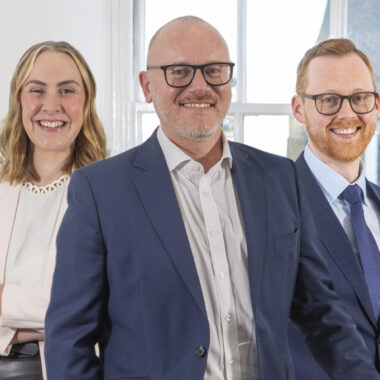Tom Cox gives his take on the current state of the UK debt market
The latest trends and sentiment in the debt funding market
Signs of pressures easing but challenges persist
While not without continuing challenge, there has been an increase in confidence over the last six months at the lower end of the mid-market which has accelerated in Q3, with the midterm outlook on interest rates having peaked, and borrowers able to map forward the next 12-24 months with more certainty as inflation begins to subside.
That said, challenges that have persisted throughout this year, such as high input costs and wage inflation, mean this confidence remains somewhat fragile, especially in the context of tepid UK economic growth projected next year and just 1.4% in 2025 according to the Office for Budget Responsibility. While stabilising, interest rates and borrowing costs are also still expected to remain high through 2024, meaning cash flow pressures remain, investment is more cautious but confidence relating to transactional activity in the next 12 months is improving.
In this environment, we’ve been much more focused on refinancing than buyout activity in the last six months. Indeed, many business owners are behind on their growth plans, waiting to see how the market evolves and keeping their options open as it relates to change of control or minority equity investment opportunities. This recent hesitation in deal doing likely points to a busy start to 2024, with signs of significant diligence preparation and reporting being progressed behind the scenes for many corporates as we end the year.
Demonstrating genuine growth is now the name of the game, with inflation at its most rampant earlier this year – masking some of the stalled volume growth experienced by many businesses in the last 12 months, given weakening underlying demand. So, as inflation stabilises, we will start to have greater visibility of the real winners and losers and who are best placed for success going forward.

Growth plan lag
Economic disruption dating as far back as Covid, compounded by global events like the war in Ukraine and further disruption from the Israeli-Palestine conflict, means that many business owners are likely a couple of years behind where they wanted to be when it comes to the delivery of corporate business plans. From what we’re seeing, the focus now is getting businesses ready for sale in the next 12 to 24 months, making up on lost ground in underlying trading and developing a robust exit narrative which makes it as attractive as possible for potential investors.
The expected general election in 2024 will inevitably cause some business owners to be considering their options for investment, but the noise we’re hearing is that they’re taking a more flexible view, readying themselves to have options to go to market quickly when the time comes.
In the shorter term, as they look to navigate the winter months, businesses need to remain both resilient and nimble, ready to react to obstacles they face, as well as any opportunities that come their way. This time last year, many were predicting Christmas would be extremely challenging, particularly for the retail sector, due to dampened consumer demand as the cost-of-living crisis started to bite – but that didn’t really happen. Instead, the consumer psyche largely shifted to lifting the gloom through the festive season by increasing spending. Twelve months on, as the impact of the rising cost of living has set in, it will be interesting to see if that outlook remains defiant or follows last year’s prediction and becomes more subdued.
From what we have seen over the last six months, many businesses are still finding it difficult to kickstart growth. Those that took on incremental debt during Covid, to simply stay afloat, have ended up with unsustainable capital structures, that are now draining liquidity and impeding growth. Nevertheless, even in sectors impacted by ongoing challenges like high energy costs, such as consumer goods and manufacturing, businesses may now feel they have weathered the storm and are looking for new ways to grow, or capital providers able to support strategic growth. The Chancellors’ Autumn Statement may offer some respite to the consumer, with the abolishment of Class 2 and changes to Class 4 National Insurance, supporting the self-employed, but consumer confidence remains uncertain, and business must remain nimble in the context of stagnant demand.
Debt funding rationale still rings true
There are many reasons why we’re seeing businesses seek debt funding. They could be gearing up for exit or bringing in undrawn funding for capital expenditure or M&A. We have also seen an increasing volume of refinancing mandates for deals completed during Covid, as business owners want to move on to a new lending partner that enables more opportunities to grow. For example, business owners are increasingly looking for investment partners able to kick start growth, potentially through a combination of debt and more equity-like instruments. Given the continuing high cost of capital, businesses still need to be mindful of the structures they employ, exploring financing solutions which preserve liquidity but also provide the requisite capital to unlock growth.
In other areas of the UK mid-market, capital providers have continued to focus on supporting existing portfolio assets, rather than backing new opportunities with less proven operating models. We’ve also seen that the fundraising market has become more challenging, with Limited Partners increasingly focussed on asset specific performance, downside protection and resilience through the economic cycle. In the context of a tough operational trading environment this may delay new fund raising for some in 2024, or at least until the macro environment offers a more stable footing.
For those looking to attract debt funding, our recommendation hasn’t changed. It’s crucial to seek advice and get an adviser in early, similar to a sale process, as you need to be prepared to articulate your story alongside your defensibility and credit strength, with lenders more focused than ever on downside protection. Whatever the climate, debt funding will always have an important role to play in stimulating investment and future growth.





